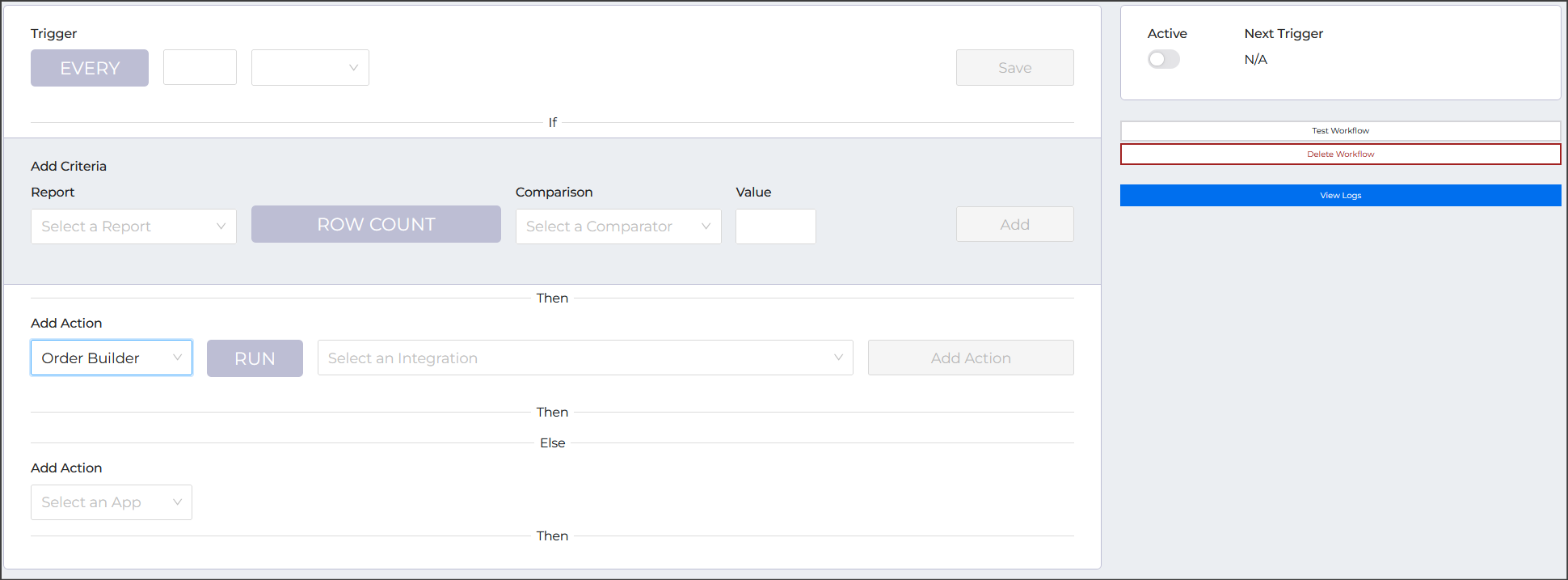- Docs
- Order Builder Overview
- Create a Workflow for Order Builder


-
Installation
-
Updating
-
Settings
-
Logs
-
API
-
Reports
-
Snapshots
-
Workflows
-
Dashboard
-
Explorer
-
Users
-
Resources
-
Custom Fields
-
Cycle Counts
-
Data Pull
-
Data Push
-
Displays
-
Lights (Philips Hue)
-
Order Builder
-
Order Processor
-
Variance
Create a Workflow for Order Builder
The final step for activating your Order Builder integration involves creating a workflow to trigger your Order Builder integration.
To create a workflow to trigger Order Builder runs:
- Select the Workflows tab.
- New Workflow.
- Specify an interval for your Workflow (see note below).
- Under Add Criteria Report:
- Select the report that you would like to use with your Order Builder integration.
- Select the comparison operator to be used with the number of rows (e.g. is greater than, equals, etc.)
- Select a value that is relevant for your report — if Order Builder should create orders on any situation that meets your filter criteria, then "greater than" and "0" are reasonable values.
- Add your criteria.
- Under Add Action:
- Select the Order Builder action.
- Select the integration that you want to run.
- Add Action.
- Verify your settings from 3-5 with your plan for order creation. Optionally, test your workflow and use "View Logs" to see the results of the test.
- Toggle the status to Active.

Note: The exact interval for this step depends on particulars about your report and the desired frequency for Order Creation. For example, if you are using Order Builder for a timed pick, you will want to ensure that your workflow is to configured to to run on an interval that aligns with the timings that you had in mind. If you require materials to be picked in 30 minutes from the time that they had been put, then it will make sense to run the workflow on a relatively short basis.
For example, if your report relies on external data that is joined through our Variance app but only updates on a daily basis, you can reduce the frequency on which you run the trigger. This can help ensure that ItemPath operates smoothly and without slowdowns (especially if you are working with ItemPath hosted on-premise).

